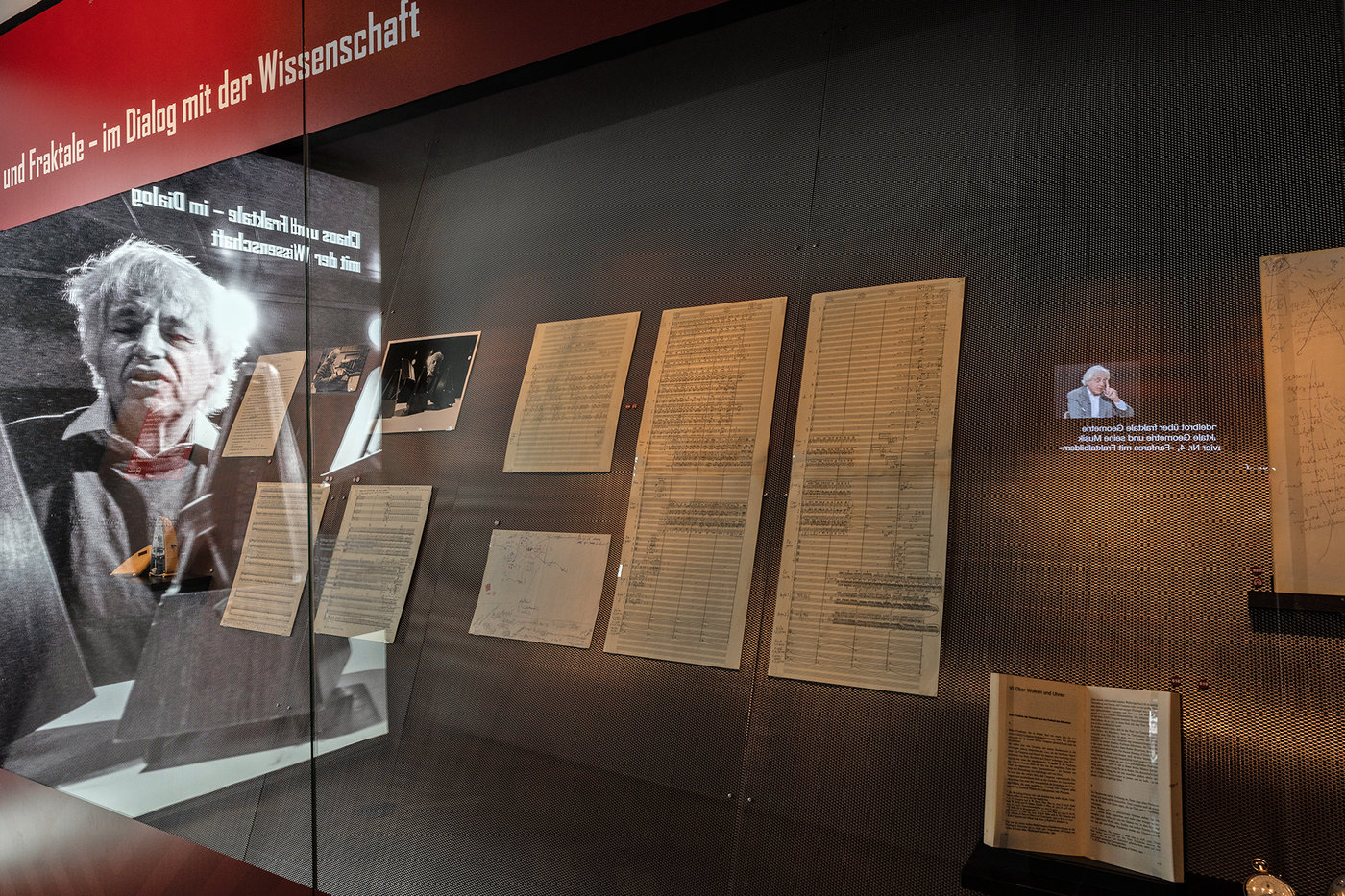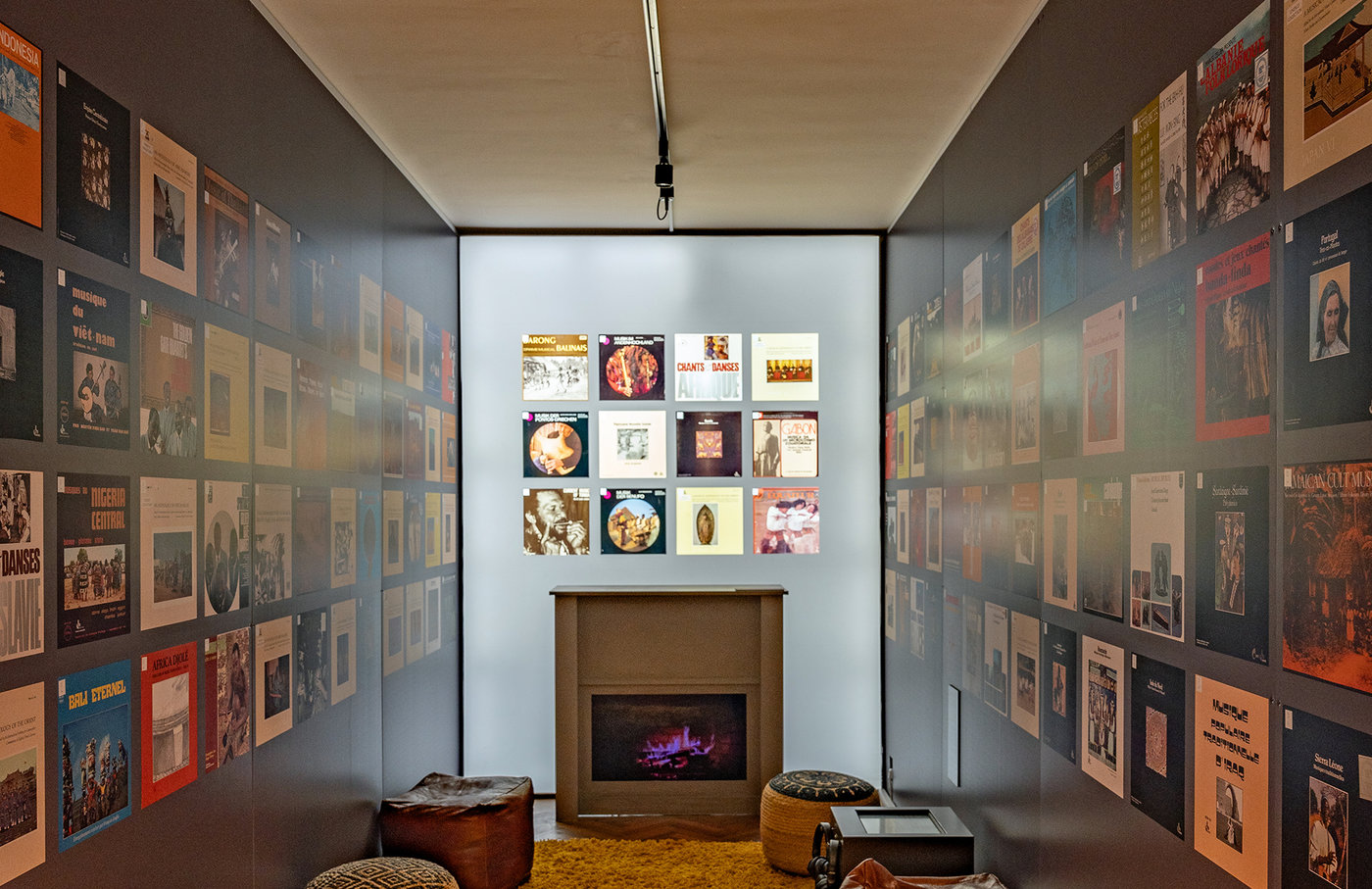"Ligeti Labyrinth" in Basel and Budapest
An exhibition worth seeing traces Ligeti's work in nine striking modules.

The Ligeti year is almost over and the 100th birthday of the Hungarian composer, who died in 2006, has been commemorated in detail in newspapers, events and radio reports. So it may seem like "snail mail" to some that the Paul Sacher Foundation is only now presenting an exhibition: In the Music Museum of the Basel Historical Museum the majority of the objects on display are from György Ligeti's estate held in the Foundation.
This "late" honor is mainly due to timing. The Budapest Music History Museum - one of the cooperation partners is the Musicology Institute of the Budapest Research Center for the Humanities Hun-Ren - where the exhibition was previously on display, only had capacity for it in spring 2023, while the Basel premises were only available from November. These circumstances do not detract from the content of the exhibition, which is highly recommended and can be seen until April 7, 2024.
It not only demonstrates Ligeti's high status in 20th century music, which continues unabated, it also introduces us to the composer's thinking and work in a fascinating way that will probably not be possible again so soon. An essential part of this "journey" into the "Ligeti labyrinth", as the exhibition is called, are the many originals to be admired - a quality that is unfortunately being increasingly neglected.
Maze in prison cells
However, anyone expecting a chronological presentation will be disappointed - fortunately. Instead, the focus is on the various facets of Ligeti's thinking, creativity and working processes, which are explored in nine modules. Topics such as "Dreams and Fantasies" or the "Web of Voices" immediately catapult connoisseurs of Ligeti's works into his special world.
The striking modules were devised by Heidy Zimmermann from the Sacher Foundation, which has been looking after the Ligeti estate for years, and the Hungarian musicologists Anna Dalos and Márton Kerékfy. The concept and idea are based on a statement by Ligeti: "I feel my way forward from work to work, in different directions, like a blind man in a labyrinth." And this "Ligeti labyrinth" finds a fascinating counterpart in the Lohnhof Basel music museum with its former prison cells, which is difficult to play.
On display is a wide range of source material that has been carefully selected and annotated. According to estimates by Heidy Zimmermann, the Ligeti estate comprises around 25,000 pages of manuscript, 10,000 pages of correspondence and 800 photos, films and audio documents. Without knowing what else is hidden in this treasure trove, the selection presented in Basel seems stringent and exciting. In this way, Ligeti's personal working process can be studied in a unique way.
Graphic concepts for musical factors
For each of his works, Ligeti wrote down pages and pages of conceptual ideas, not notes but words, wildly jumbled together with various colored pencils or sometimes in graphic representations. What at first glance appears to be an impenetrable jumble becomes an eye-opening experience in the vicinity of the composed work. The accompanying texts provide the necessary background and the music excerpts shown can also be listened to on a cell phone.
For example, there is a sketch of the famous Atmosphères (1961), on which the music is precisely described with the disposition of the form parts and their precise duration. Or there is a sketch of the course of Aventures (1962), which records the vocal and instrumental parts on four A4 sheets glued together horizontally, as a "time and form control", as is noted on it. Why did Ligeti first make such extra-musical sketches? "Ligeti only received piano lessons at the age of 14," explains Heidy Zimmermann, "so he had to imagine musical impressions for a long time because he had no way of writing them. Perhaps that is the reason for this path."
Ligeti's special path is illustrated by the Violin Concerto (1990-1992), which is discussed in the chapter "Mood and detuning". There are no fewer than five sheets of colorful verbal sketches. Kerékfy characterizes these in the excellent accompanying catalog: "The notes refer partly to the form of the movements, partly to their melodic content and metrical structure. Ligeti also planned the basic tempo and the estimated duration."
Another module focuses on the "Rhythmic Discoveries". It shows Ligeti's turn to polyrhythms, as used in the Piano Concerto (1985), for example. He was inspired by the music of a Central African tribe, the Banda Linda, which consists of rhythmic polyphonic patterns. Ligeti owned a collection of around 140 records with traditional folk music from all over the world, which is presented in a themed room with all the covers. This is an exciting aspect that also stimulates discussion in the case of Ligeti. There is so much to see and read in Basel.









